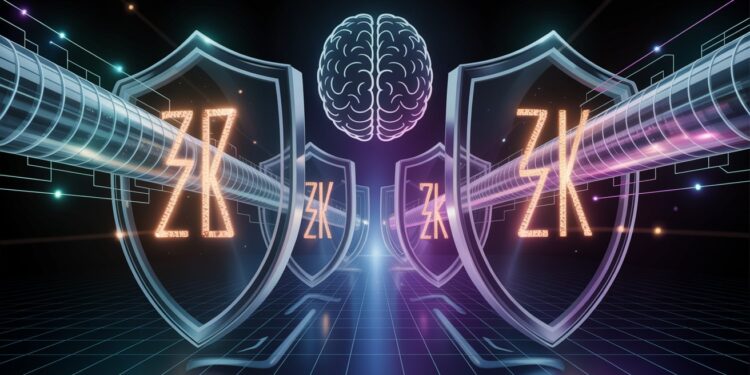Introduction
Blockchain technology is changing the way we share and store data. But privacy and speed still pose big challenges. That’s where zero-knowledge proofs come in. They let you prove something without revealing the details. zk-SNARKs and zk-STARKs are two ways to do this. They are helping blockchain systems become more private and faster. Right now, these tools are gaining popularity. As more projects adopt zero-knowledge proofs, they could reshape how we use decentralized systems.
What Are Zero-Knowledge Proofs? An Introduction to Privacy-Preserving Cryptography
Definition and Basic Principles
Zero-knowledge proofs are special cryptography methods. They enable someone to prove they know something without showing the actual data. Think of it like showing a password without revealing it. The key ideas are:
- Completeness: If you know the secret, the proof works.
- Soundness: If you don’t know the secret, the proof can’t be faked.
- Zero-Knowledge: The other person learns nothing but the fact that you know the secret.
Historical Context and Evolution
These proofs started during the 1980s. Back then, they were mostly used in theory. Over time, developers found ways to use them practically, especially in blockchain. Today, zero-knowledge proofs are key in privacy coins and scaling solutions.
Relevance to Blockchain Technology
In blockchain, privacy is a major concern. Zero-knowledge proofs help keep transactions private while confirming their validity. They also reduce the load on networks, making systems faster and more scalable. This balance of trust and privacy is why they matter so much.
Understanding zk-SNARKs: Concept, Features, and Applications
What Are zk-SNARKs?
zk-SNARKs stand for Zero-Knowledge Succinct Non-Interactive Arguments of Knowledge. They are small, quick proofs that can be checked easily without interaction. The big selling points are their speed and size. They are perfect for blockchain because they don’t need multiple rounds of communication.
Technical Foundations
One tricky part is the “trusted setup.” It involves creating secure parameters before generating proofs. If this setup is compromised, security could be at risk. zk-SNARKs produce proofs efficiently, making them popular in many projects.
Advantages and Limitations
Advantages:
- Proofs are tiny and fast to verify.
- They can handle complex computations.
Limitations:
- Require a trusted setup process.
- If the setup is flawed, security could be broken.
Real-World Examples and Use Cases
- Zcash: Uses zk-SNARKs to keep transactions private.
- Ethereum Layer 2: Implements zk-rollups for higher speed and lower costs.
- Decentralized Identity: Verifies identities without exposing personal info.
Exploring zk-STARKs: Advancements and Distinguishing Features
What Are zk-STARKs?
zk-STARKs stand for Zero-Knowledge Scalable Transparent Arguments of Knowledge. They focus on being secure, scalable, and transparent. Unlike zk-SNARKs, they don’t need a trusted setup. Their goal is to handle huge computations easily.
Technical Innovations
zk-STARKs use hash functions instead of complex setups. This makes them more transparent and resistant to attacks. They can verify enormous datasets without slowing down, making them ideal for blockchain scaling.
Benefits Over zk-SNARKs
- No trusted setup: Reduces trust risks.
- Quantum resistance: Better equipped against future threats.
- Greater scalability: Handles bigger data more efficiently.
Applications in Industry
- Blockchain scalability: Enables networks to process more transactions quickly.
- Privacy in finance and logistics: Protects sensitive data.
- Supply chain management: Verifies claims while keeping info private.
Comparing zk-SNARKs and zk-STARKs: Key Differences and Use Cases
Performance and Efficiency
| Feature | zk-SNARKs | zk-STARKs |
|---|---|---|
| Proof size | Small | Larger |
| Generation speed | Fast | Very fast |
| Verification time | Quick | Quick |
Security and Trust Assumptions
- zk-SNARKs depend on trusted setup.
- zk-STARKs use transparent setup, no trusted parties needed.
Scalability and Practical Deployment
- zk-SNARKs excel in environments with smaller data sets.
- zk-STARKs shine with larger, complex calculations.
- Both have implementation challenges but are improving.
Which Technology to Choose?
Pick zk-SNARKs if speed and compact proofs are your priorities. Use zk-STARKs if transparency and quantum resistance matter more. Your project’s scale and security needs determine the best fit. Neither is perfect, but both are evolving fast.
The Future of Zero-Knowledge Proofs in Blockchain and Beyond
Emerging Trends and Technological Developments
New ideas are making proofs more efficient. Combining zero-knowledge with other privacy tech is also gaining interest. Expect faster, cheaper, and more secure proofs in the near future.
Challenges to Adoption
Complex math and significant computing power are hurdles. Also, standard rules and regulations are still unclear. Still, ongoing research helps overcome these obstacles.
Expert Perspectives
Industry leaders believe zero-knowledge proofs will grow. They see these tech advances as essential for private, scalable systems. Predictions point to broader adoption in finance, healthcare, and other fields.
Conclusion
zk-SNARKs and zk-STARKs are transforming how blockchains handle privacy and speed. They make it possible to verify data without exposing it. These tools are essential for future blockchain systems that need to be secure and fast.
If you’re a developer or business, stay updated on new developments. Test open-source options to see how they fit your needs. Choose the right protocol based on your security, speed, and scalability goals. Zero-knowledge proofs hold the key to a safer, more private digital world. Embrace them now and shape the future of decentralized tech.
Discover more: Twitter | Website | GitHub | Telegram | Facebook | YouTube

























